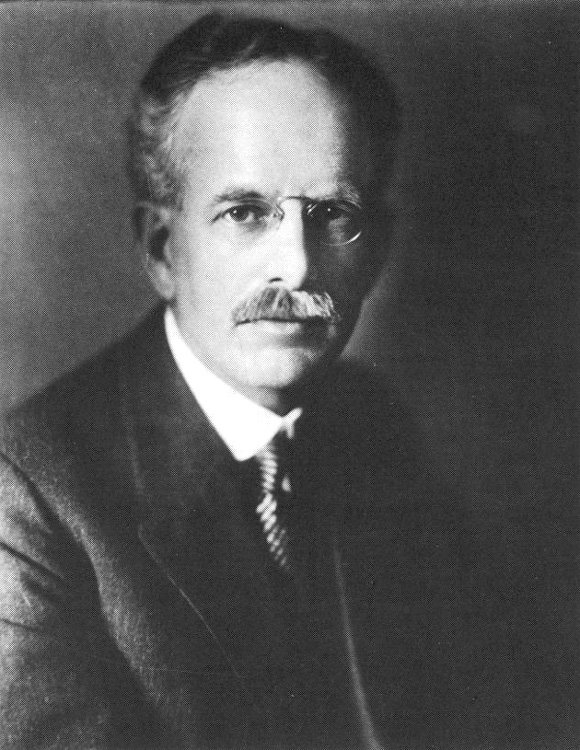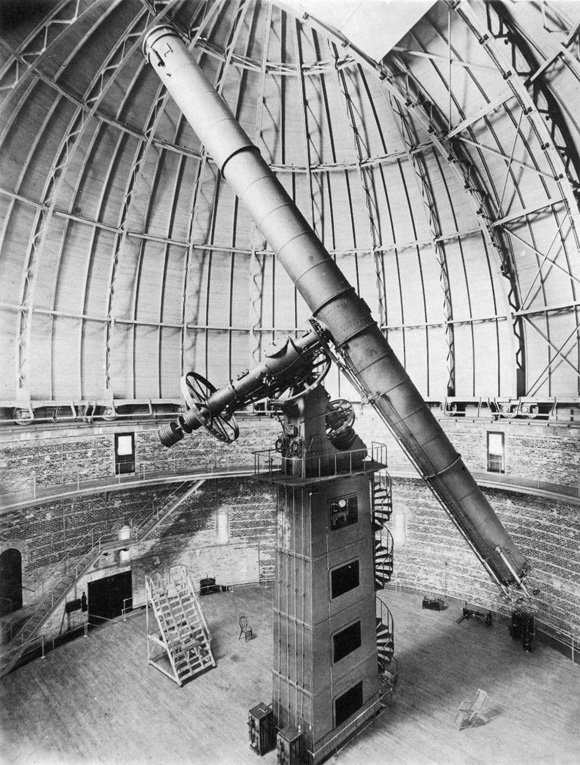George Ellery Hale (1868-1938): Astrophysics
With a promise of a working
observatory and financial support from wealthy Chicago businessman William
Ellery Hale, William Rainey Harper welcomed Hale's son, George Ellery
Hale, to the University of Chicago as associate professor of astrophysics
in 1892. Although Hale never earned a graduate degree, his work at MIT
as an undergraduate had already gained him prominence in the emerging
field of astrophysics.
Hale played a pioneering role in the new astronomy that advanced beyond the identification and plotting of stars. By applying developing understandings of light and motion to an analysis of stars, the chemical and physical characteristics of even distant stars could be understood. Of particular interest to Hale was the closest star, the sun.
While riding a streetcar in Chicago in 1889, an idea came to Hale "out of the blue" that made photographing the sun's prominences possible. By 1891, he was obtaining important results with his new spectroheliograph at the Kenwood Observatory set up in the backyard of the family home at 4545 South Drexel Avenue.
When George Hale joined the faculty at the University of Chicago, he was given no teaching or administrative duties and focused his energy on planning the new observatory at Williams Bay along Lake Geneva, Wisconsin. Opened in 1897, the Charles T. Yerkes Observatory represented the best quality of both scientists and equipment to be found anywhere. The observatory's forty-inch telescope provided extraordinary viewing opportunities for measuring stellar parallaxes and for making direct comparisons of star positions.
With the promise of a sixty-inch reflector lens to be contributed by his father, Hale urged the University in 1896 to provide a mounting for the lens. When his efforts failed, the newly formed Carnegie Institution met Hale's request and offered him an escape from the budgetary restraints he had encountered at Chicago. Hale resigned from the University of Chicago in 1905 to devote his time to the Mt. Wilson Solar Observatory near Pasadena he had founded the year before. By 1908, the Mt. Wilson sixty-inch telescope, the largest in the world, was operational.
Hale was blessed with many advantages: his father's wealth freed him from many of the personal financial constraints which checked other scientists, and his career coincided with the growth of modern science. But it was Hale's ambitious research agenda and his curiosity that were most notable.
He was not only a superb astrophysicist, he was a master creator of institutions within which scientists could do their work.

Young, brilliant, and ambitious, Hale was the ideal collaborator with Harper in founding the University's astrophysical research program.

Four inches wider than the Lick telescope on Mt. Hamilton in California, the light-gathering capabilities of the Yerkes instrument allowed Hale and his colleagues to see farther and in greater detail than anyone ever had before. Hale attached his newly designed Rumford spectroheliograph to the telescope and used it to investigate the sun's internal characteristics. Hale was also the first to photograph low temperature red stars known as Secchi's fourth type.
